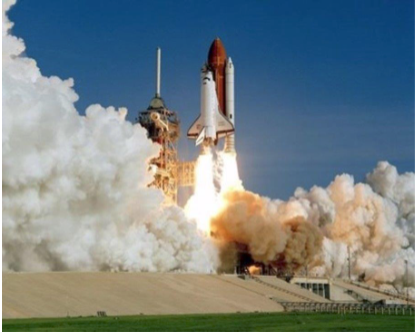Velocity and Acceleration Profiles of a Shuttle
Kwan Jie Lee; Alex Gale; Lucas Minet; and Angela Lee

Note: Click on image to see PowerPoint presentation
Summary
STS-121 is a NASA space shuttle mission to the International Space Station (ISS). The ISS is a habitable satellite (Space station) in a low Earth orbit. We employ calculus-based methods to analyze and study the flightpaths, altitude, velocity, and acceleration profiles of the STS121 data reported by NASA as it travelled through outer space. Our studies unravel information about the critical points, local maxima and minima, concavity, and inflection points in the altitude data. The velocity profiles were fitted to polynomial functions using least square data fitting using linear algebra-based methods. The acceleration data involve piecewise functions which is related to the time scales involving burning of the propellent and separation of the external propellant tank as the space shuttle gets ready to move into orbit. We estimated the work done in transferring a load from Earth to the International Space station. We used optimization methods to design an optimal solar panel geometry for a satellite by minimizing the surface area. This research provides novel applications of the fundamental theorems of calculus to study motion in outer space and involves mathematical modeling, optimization, curve fitting, data analysis and data visualization.


